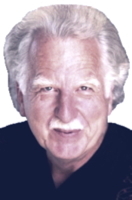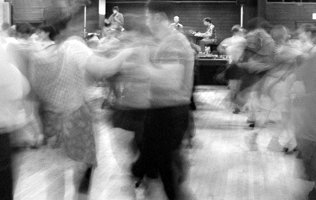
|
Folk Dance Federation of California, South, Inc.
|

|
CLICK IMAGE TO ENLARGE
 In our era of mass communication, mass mobility, and mass differentiation of personal attitudes, beliefs, interests, and philosophies, communities are no longer geographically bounded entities. They are communities of shared experiences, shared beliefs, shared activities, and shared ideas.
In our era of mass communication, mass mobility, and mass differentiation of personal attitudes, beliefs, interests, and philosophies, communities are no longer geographically bounded entities. They are communities of shared experiences, shared beliefs, shared activities, and shared ideas.
Communities grow up quite naturally. You naturally gravitate toward people who share your outlook on the world. Who like the things you like. Who want the things you want. You share ideas, thoughts, and feelings with them, and they become your friends. Through them you meet other like-minded people, and soon a community is formed – a community of friends.
We all need these communities as part of our lives. We need them for companionship, for support, to bounce ideas off of, to validate feelings, to share hardships, to share our joys, for warmth, for discipline, and for a feeling of connectedness to the rest of the world. You probably belong to several. And they're important to you. Without them we would each be alone and adrift in a fragmented and tumultuous world.
Therefore, building communities seems important to me. Understanding communities is important. Communities have subtle dynamics.
In a large community, smaller groups tend to form, usually groups with an intense common interest, such as computer programmers, or old-time musicians, or cloggers, or vegetarians, or chiropractors. This is natural. These sub-groups are beneficial to their members, who form stronger friendships with people with whom they share an intense common interest, and beneficial to the larger group, which gains in vitality and love because of the strengthened friendships which have developed.
Unless the sub-group becomes a clique. Cliques are inward-turned groups. They are self-aware groups – interested in their own us-ness, in their own uniqueness. They are not much interested in admitting outsiders – non-members. They become more interested in intensifying the interactions between their own members, to the detriment of the larger group. They become like the self-centered individual, who become so self-involved that he looses awareness of the needs and feelings of others. Cliques sap the vitality of the larger group.
In any large group, leaders will emerge. This is natural. And beneficial to the group. These leaders who emerge are usually the members who are most interested in sustaining and enhancing the vitality of the group. They are the ones with the time, energy, and desire to organize, energize, harmonize, and strengthen the group. In this way the group and all the members benefit.
Unless the leadership becomes an elite. This is very detrimental to the group. When the leaders become an elite, they begin using the group for their own purposes. To give themselves a sense of self-worth, or self-importance. To exercise control. To gain respect or admiration. To become a "big cheese." This sucks the life out of the group. The members begin to feel more distant from the leaders. Warmth is lost. Members who wish to lead a new activity or contribute to an ongoing activity are stifled or scorned. Energy is lost. Soon vitality is lost and members begin to drift away.
The formation of cliques or elites weakens a community. What strengthens it?
Activities where all members feel a sense of sharing, participating, and belonging. Dances, of course, come immediately to mind. They are great shared activities. They give everyone a sense of involvement, and they're just plain fun. They're flirtatious. They're human, touching activities. They're aerobic. They're expressive. They can be both relaxing and energizing at the same time. Ideally. Hard to think of a better activity. To quote my friend, Peter Gott: "Dancing is the most fun you can have with your clothes on!"
Sometimes our dances are not ideal. I always worry when I see a newcomer sitting out. Maybe hesitant to try it, maybe without a partner. I always try to get them involved, mostly because I think it would be so good for them. We all have some favorite partner (or several favorites) we'd like to dance with. And we all enjoy dancing with someone who's an experienced dancer. But how will our community grow if we don't involve these new people? A community that doesn't grow eventually withers, sort of like a tomato plant without water.
On my wish list, my plan for strengthening a dance community, I would put this: I wish that every member, just once during the evening, would make a special effort to dance with someone they've never danced with before.
When I think of other ways to make a newcomer feel like part of a group, one other thing comes forcefully to mind. It will sound old-fashioned and corny to some of you. Introductions. Maybe it's just me, but I always feel a little shy and hesitant to go up to someone I've never seen before and say: "Hi, I'm Chris. What's your name?" It's such a nice feeling to be introduced to people. It's genteel and gentle – civilized. Think about the last time you were a stranger in a new group, and your friend introduced you to two or three others. Didn't that feel good? Didn't you fell welcomed and at ease? I think introductions are great, whether you're the new person being introduced, or the person who's meeting someone new to the group or activity. I have one reservation, though. I dislike meeting everyone at once in a whirlwind of introductions. I forget all the names. And then I feel awkward. I think two or three at a time is about right.
On my wish list, I'd put this: Try to introduce every new person you meet to two of your friends. They'll soon know everyone.
In spite of the fact that dancing is such a wonderful group activity, I do have some reservations about it. In spite of all the good things it is – exciting, fun, flirtatious, a good way to meet people, etc. (see more extensive list above) – it is not a good way to really get to know people. For that, you need to sit down and really talk with someone – socialize, visit, find out the things they're interested in, find out what shared interests you have (besides dancing). A sharing of ideas and feelings must occur for a friendship to develop. Otherwise, you will have a dance group of acquaintances.
Too many of our dances end in a great diaspora – a scattering of energy in a hundred different directions. Then what could become a community of friends becomes a loose-knit community of acquaintances, or a loosely-linked group of sub-groups. That's why I often feel that the social part of a dance event is more important than the dancing itself. Often, to me, the opportunity to go and have a coke or beer afterward and just socialize, is more important than the dancing.
I think a truly successful dance community needs to promote more social events. Dance or music weekends or retreats are great. Or hiking or cross-country skiing trips. Pot-luck dinners or hot tubbing.
I suspect there are other types of activities that the dance community, or a significant chunk of it, could participate in. And these would increase the feeling of community, and the vitality of interpersonal relations within the community. I suspect we have a great deal more in common than we often think, due mainly to the natural way in which communities are formed, that is, people inviting their friends, and those friends inviting others, etc. A community of similar values tends to result.
In fact, we could probably make the following generalities about our own community:
1. Generally liberal bias.
Peace, anti-nuclear, love-oriented attitudes prevail. Probably against building more nuclear weapons, star wars defenses, reinstating the draft, etc.
2. Outdoorsy, environmentally conscious group.
Lots of hikers, bicyclists, cross-country skiers. Generally supportive of environmental causes and efforts.
3. A certain level of new-age consciousness.
A general interest in alternative health strategies, holistic healing, well-ness. An awareness that changing minds and attitudes promotes better health in individuals and in societies. A high level of interest in music, singing, and, obviously, in dance. Perhaps also a higher-than-average interest in art and theater, folkcraft, and folklore.
3. General belief in a knowledge-based society.
Open, knowledge-seeking attitudes, with interests in computers, information-sharing, and networking.
4. And, of course, exceptions to the above generalizations.
But this general nexus of interests and attitudes give rise to the thought that the dance community, or at least a significant proportion of it, might want to work together in other activities. Such as anti-nuclear or anti-war efforts, environmental causes, aid to Central American refugees. Perhaps we could institute a computer bulletin board for the exchange of ideas and news, or stage a theatrical dance event (I've always wanted to do a spoof of those old glitzy Broadway musicals, where all the men danced with spats and canes, and the women danced with fruit on their heads). Or a health and well-ness weekend. We could stage a dance marathon to raise money for some important cause. We could form networking groups. Maybe all the chiropractors or computer programmers or massage therapists would like to organize a social evening to talk shop, exchange ideas, techniques, etc. Or we could all give each other foot rubs.
5. Or none of the above.
This article is meant to be food for thought, not a plan. Any plan must evolve from within the community. But I would like to see more social events – big and little. Opportunities to get to know people and exchange ideas. Get-togethers after the dance, or before the dance. These things would strengthen our friendships, and strengthen our sense of community, which I obviously think is important, for the reasons cited above. I think we all need the warmth and support of loving communities of friends.
What do you want our dance community to be? You are the dance community, so your ideas are important. I see a lot of potential for the evolution of a much-more-vital community. There are limitations, too. Limitations of time, distance, communication, and desire. There are limitations of harmony, and limitations of coherence.
These few random thoughts I've stirred up into this food-for-thought dish. Please chew carefully.
###
Used with permission of the author.